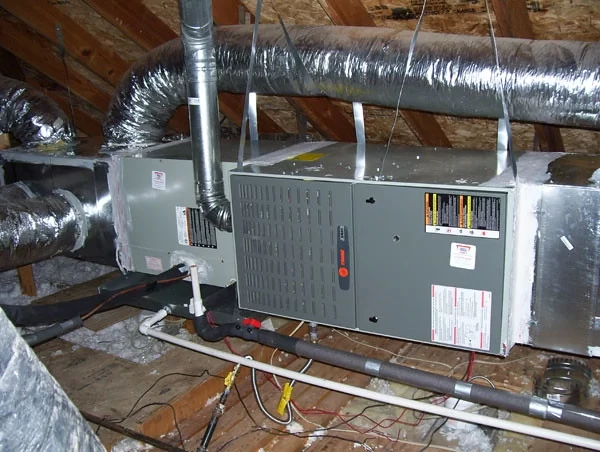Just like many homes in Miami, you might have mounted your outdoor air conditioning unit in your attic.

Well, everything goes well until you find damp patches around the space. A leaking air conditioner in your attic can be a nuisance since it can damage the insulation around the area. In worse cases, the water can inflict damage on the structure of your home. However, don’t hesitate to call one of the established HVAC contractors once you detect a leaking AC in your attic.
According to Direct Air Conditioning, “we are a renowned AC repair contractor in Miami”, and presumably they serve as one of the best options if you are stuck with a leaking AC. Apart from assisting valued clients in the city with affordable services, HVAC agencies also tend to carry out regular maintenance. Before recommending effective fixes to a leaking AC in your attic, let’s check why the system might be leaking in the first place.
Problems in the condensate system of your AC happen to be the most common factor leading to leaks. This part of the AC is responsible for collecting water. The fluid condenses when you run your AC all along the evaporator coil. Improper installation of your AC might have a loose drain line.
Once this line gets detached from the condensate pan meant for water collection, the water will get through the hole in the pan. To fix this problem, HVAC experts generally get a new drain fitting and attach it once again to the pan.
At times, there are blockages in the drain line. You may encounter this situation frequently if you reside in a humid area. In humid environmental conditions, the rapid growth of algae can block the line. At times, rust and dirt also cause this blockage. Once this drain line sustains a clog, you can expect the condensate pan to overflow.
In other situations, the condensate pump might develop a fault. This pump is responsible for drawing water from the drain line. If this pump starts malfunctioning, the area gets clogged due to mildew and mold growth. In this case, you need to get the pumps replaced.
As you observe, several factors can lead to leakage on your attic AC. Also, you cannot rule out the possibility of a cracked condensate pan or the presence of moisture in the ductwork in the absence of proper insulation.
Read Also:
Here are some ways you can repair leaks on your AC in the attic.
Leaks in your AC may arise from a clogged air filter. On consistent dirt accumulation, the filter fails to pass air freely. As a result, the evaporator coil freezes up. To maintain the proper functioning of your AC, the refrigerant needs to pass through the evaporator coil. So, the airflow should be adequate to absorb heat. When the airflow gets restricted, it leads to the formation of ice, and you’ll have water dripping all over the place.
Besides, blocked registers, vents, or even dirty evaporator coils can lead to frozen evaporator coils. Other factors attributing to such a situation include low refrigerant levels and a damaged blower motor.
To address a frozen evaporator coil issue, make sure to put the AC off immediately. Call the HVAC experts and do not turn your AC on until they help you out. A frozen evaporator coil is avoidable and requires you to replace the air filters every three months. Also, try not to cover any register or air vent. The experts will check the refrigerant level and refill the same if needed.
To detect whether the leakage originates from an overflowing drain pipe, inspect the pipe and pan once you put off the AC. Usually, the pipe remains connected to the dip pan.
You can clean the overflowing pan using a wet-dry vacuum. Once done, use a flashlight to check the edges, corners, and bottom. For a makeshift remedy, you can use a water sealant to fix the cracked drain pan. However, experts recommend replacing the damaged component.
You will find two drain pans in your AC. The first is permanently fixed under the evaporator coil, while the other is removable. The latter is present under the unit. While patching up the leak, the permanent pan should be in place. Since it remains welded, you will need professional support to work around it.
In case you have a clogged condensate drain pipe, you can work on it using a wet-dry vacuum. Whether it’s debris, algae, or fungi, you can unblock the pipe using the right set of tools. Here’s how you should go about it.
Find the PVC pipe, which should be located close to the drain pan of the handler. You will find a piece of pipe placed at 90 degrees. On the top, there should be a little cap.
Once you locate the cap, take it off and pour vinegar (around 6 ounces) into the drain line – this will kill the fungi and algae.
If the clog persists, you can try cleaning it using the wet-dry vacuum. Close to the condenser unit, you will find the outdoor condensate drain line close to the condenser unit. Turn the vacuum on after connecting the wet-dry attachment. This way, you can unclog the drain pipe.
Ignoring a leaking AC will simply aggravate your problem. Over time, the leak might grow more prominent, leading to structural damage in the building and causing considerable weakening of your walls and ceilings. Therefore, if you find water under the air handler inside your room, put the AC off and hire a technician.
Established HVAC contractors like Direct Air Conditioning can help you address water leakage issues in a quick time. With professionals on your side, you can detect the root cause of the leakage and get the problem sorted immediately.